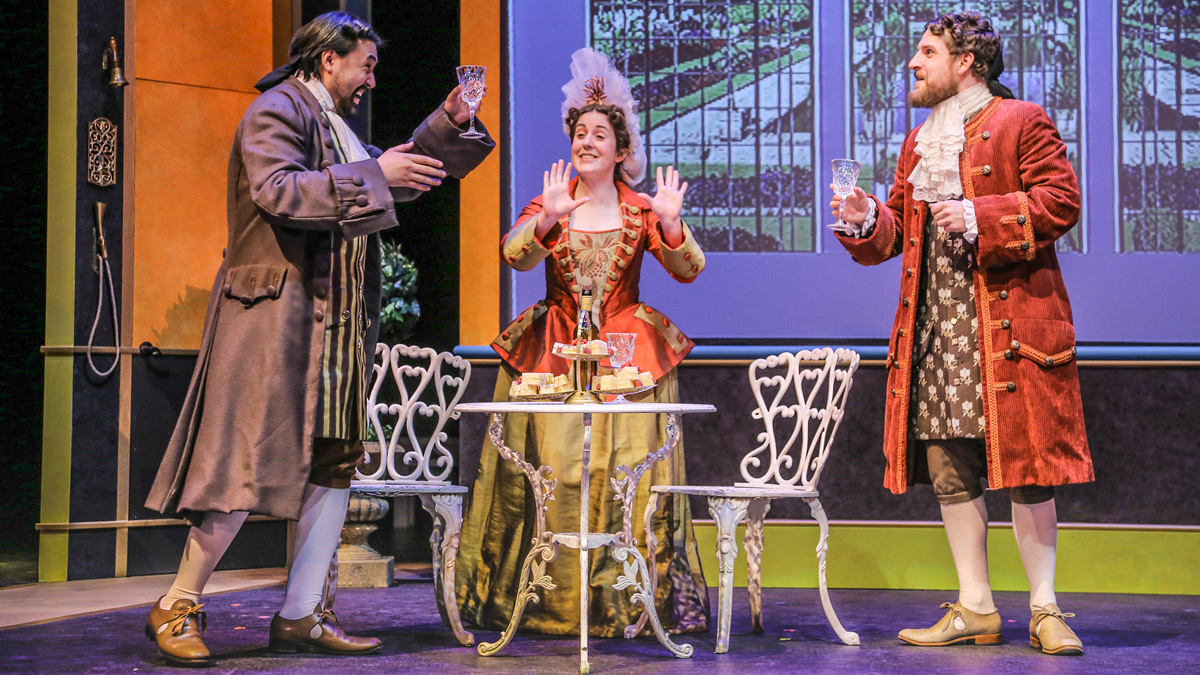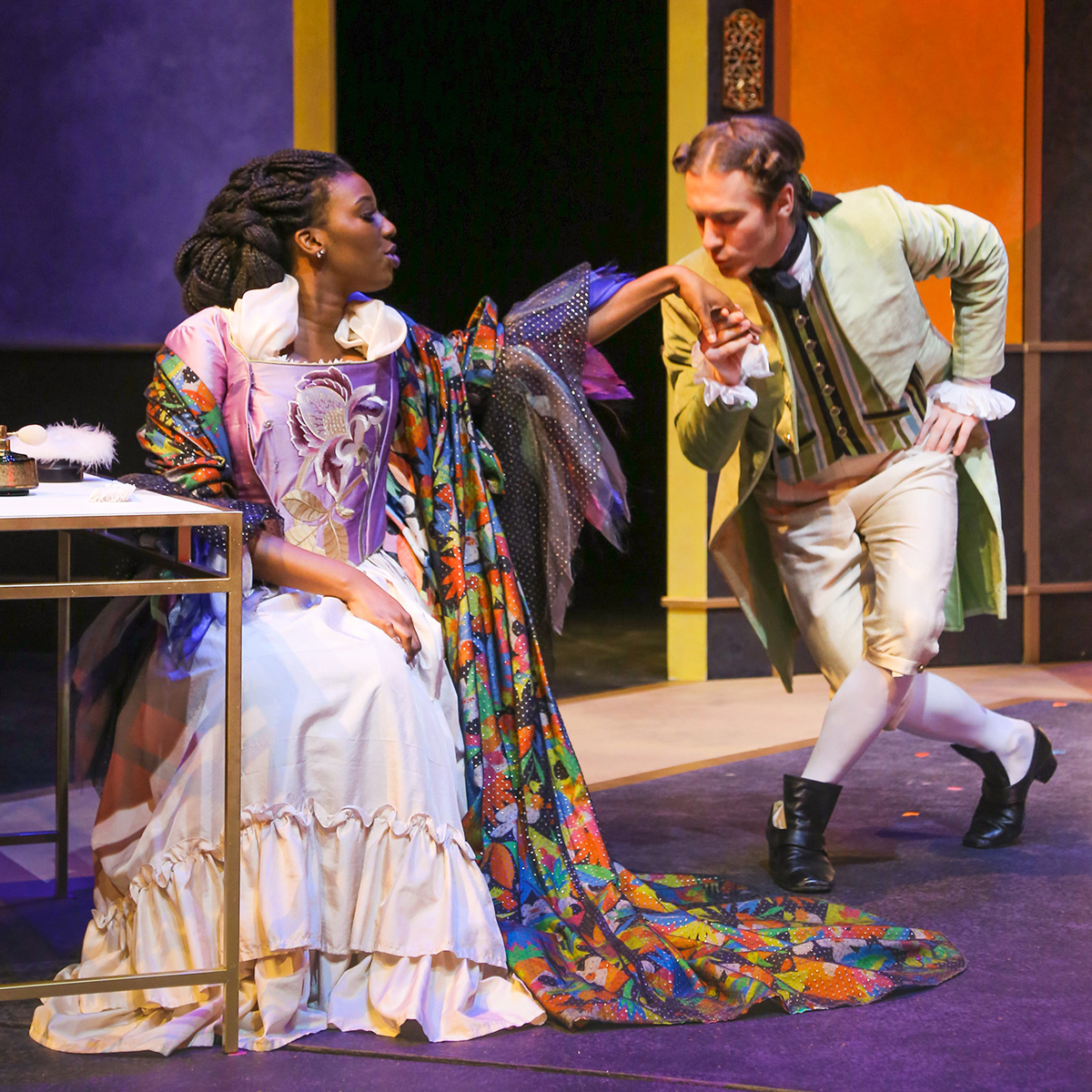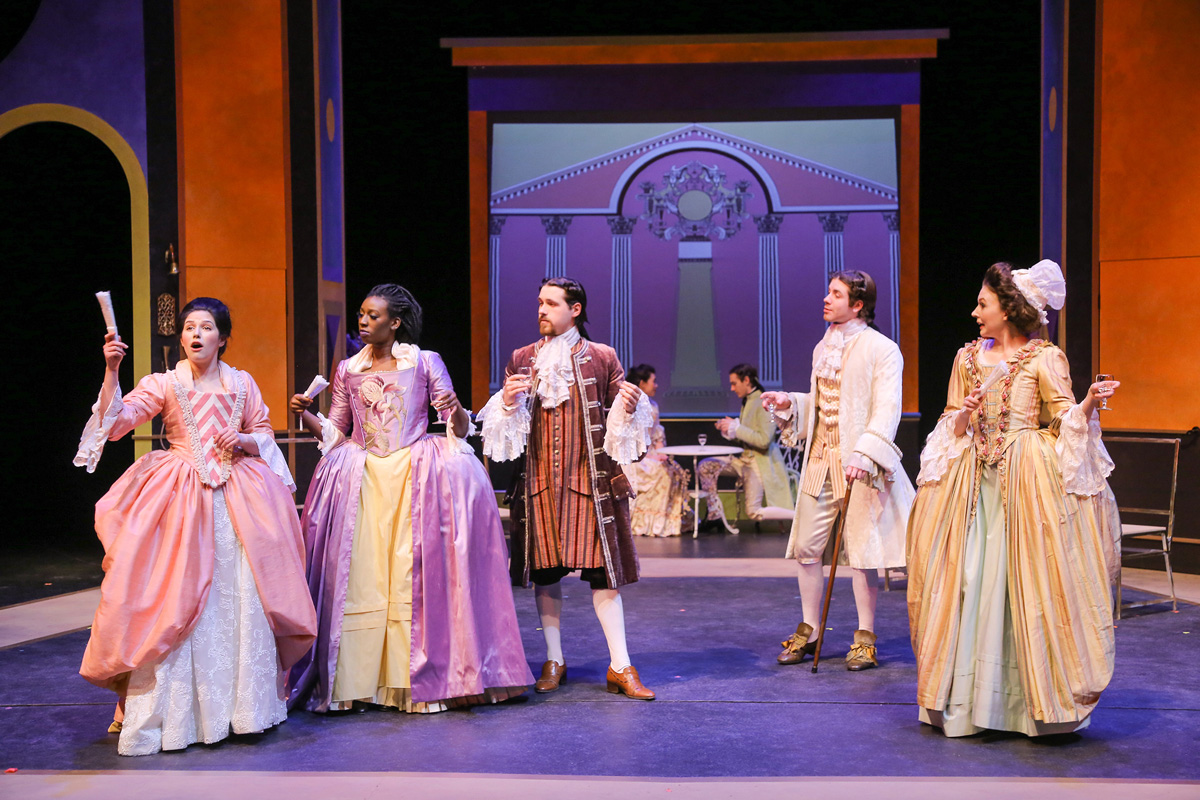Equal parts entertaining and irritating: Unpacking ‘The School for Scandal’
 Ed Ellis
Ed Ellis The School for Scandal
Originally written by: Richard Brinsley Sheridan
Directed by: The 2018 Mary Mooney Distinguished Visiting Artist
The School for Scandal is a rollicking, ridiculous, and colourful delight — which perhaps makes it even more disappointing that, while it entertained me greatly, it annoyed me at least as much.
Sheridan’s script is peppered with caricatures of city gossips, hypocrites, goodhearted rogues, and awkward middle-aged men. The cast digs into these archetypes. While the characters have the potential to become grating or tired, they’re simply hilarious, and even the most devious of them is charming.

Silverius Materi is wonderfully despicable as Joseph Surface: even as we realize how horrible he is, he’s so funny that we can’t help rooting for him anyway. Billy Brown’s Charles Surface is at once foolish and sweet, and Connor Suart’s Peter Teazle is infuriating simply because he’s simultaneously pathetic and endearing. Not all the performances are equal, however; Kiana Woo as Maria fell flat for me, and Crabtree and Mrs. Candour seemed overdone, even as caricatures go. That said, the performances were strong overall, and by all means the group worked well together in a semi-ensemble cast.
Mimicking a high school production at the fictional Ariel Winsley School for the Arts, the technical aspects of The School for Scandal are all the better for their simplicity. The set is bold, colourful, and geometric, a striking background for a relatively simple narrative. At one point, actors sing with handheld microphones, the lights never dim for scene changes which reveal titillating details of fictional high-school actors’ lives, and the show’s assistant stage manager Lauren McCarthy and Izzy Bergquist make regular appearances in oversized headsets and school uniforms. It’s a quirky, fun take on an 18th century play that some audience members might find stuffy or outdated.
That said, though, I have to confess that the added “frame narrative” of A School for Scandal falters. The goal is obviously to make Sheridan “relevant” for the 21st century university audience; “Forecasting Facebook, Twitter and #MeToo” reads a blurb on a simple (fictional) program prepared by “Victoria Lightman, Head Drama Teacher.” Yet I can’t help but think, if art is relevant, it shouldn’t need to be shoved in my face.
While the stories of modern students and their complicated drama are entertaining, I’m irritated by the fact that Studio Theatre seems to think plays can’t stay relevant unless they’re adapted for new audiences. The fact is, Sheridan wrote A School for Scandal in 1777, and people have been performing it since. There’s a reason for that: it’s a good play, and it tells a timeless story of gossip, ruin, drama, and (yes) scandal. So why do I need to be reminded of how #relatable it is?

It’s not that adaptations of canon scripts always fail — but if Studio Theatre is so desperate to showcase modern theatre, it’s not bound to perform 18th century melodrama. Generally, the purpose of adaptation is to change the project of a play, not to exaggerate its original premise. Yet the frame narrative of Sheridan’s work only serves to emphasize and parallel the original drama. On principle, I think it’s semi-insulting to audiences’ intelligences that the “message” of a play needs to be overwrought through additions and changes.
With that frustration expressed, this is a good play, performed by strong actors, and it’s a fun watch. No regrets.




